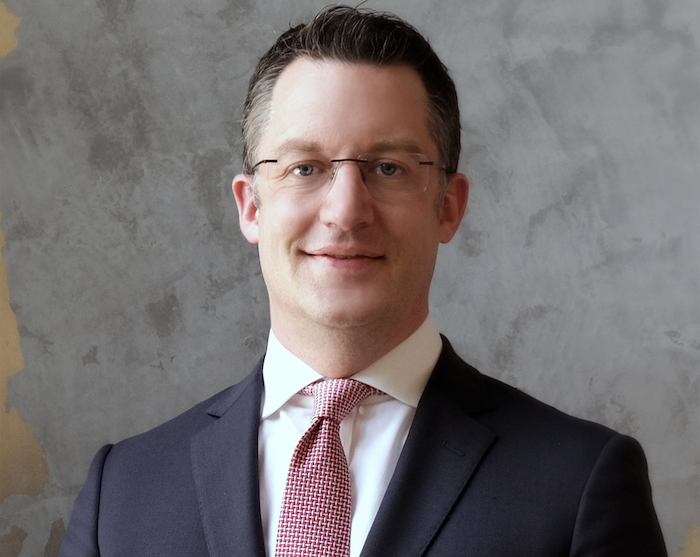DHRE speaks to different income groups. What are the hallmarks of your communication with each group?
It's probably worth looking at the background of Dubai Holding Real Estate [DHRE] to answer this. DHRE is a master developer and a full-service real estate vertical of Dubai Holding. A consolidation of Dubai Holding’s real estate entities, including Dubai Properties, Meraas, North25 and Ejadah, DHRE was formed by Dubai Holding to bring together two distinct brands – Dubai Properties and Meraas, with distinct customer sets.
As an entity, DHRE came into existence in the third quarter of 2020 and now we are the umbrella organisation overseeing the real estate operations across the two brands. We have a broad spectrum of products across the board that target different consumer sets. But there is still a lot of overlap between the various sets, largely governed by destination and community.
When you look at the marketing journey and how we are driving the consumer behaviour and demand in the market, you have to look at the broad spectrum – awareness, information and transactions. While we cover a broad socio-economic demographic, we are also looking at the geographical and nationality demographics. For instance, in Dubai, we have a broad nationality demographic. From a government standpoint, we are also looking at Foreign Direct Investments (FDI).
It's fair to say that there is a parallel between an investor in real estate who is looking for a first or second ‘home’ and an investor who is looking for a yield. Homeowners still look for capital appreciation, security, and value for money, except they look at rental spend rather than rental yield.
The same factors exist across both investor groups. A yield investor is also looking for the same things – but they are not mutually exclusive. You can't market a yield to the investor group anymore without giving it substance such as community, neighbourhood, location and lifestyle. Similarly, you can't market all of that without considering the financial metrics. So, we have to get that balance right.
When we look at messaging and how we talk to these consumer groups, we have kept a balance between the digital and traditional campaigns. This balance is key.
The digital can be highly personalised, even if that content is by geography. At DHRE, we see investment coming from Asia and Europe. We generate content in at least four languages, depending on the product type. The digital campaigns enable us to be personalised and targeted and we are able to do it across the spectrum. We can also target consumers based on where they are in the awareness-to-purchase cycle.
In this region, in particular, the traditional media still has the power in reaching audiences. Part of our strategy this year has been to maintain an out-of-home presence. We feel it is quite a differentiator and it gives us some credibility, market leadership and helps underpin us as a trusted brand. Typically, we execute awareness-based campaigns and we use it across different product cycles. The messaging never has a promotional aspect on it. It is mainly executed to give credibility and assurance.
Another medium we explore is Radio, which continues to have a huge presence, with 92% reach in the country and enables us to target individual groups, in their languages, and that's useful. The reach of radio in the UAE is high compared to other markets such as UK, where it’s only 70%. Hence, we can't underestimate radio and its capabilities here.
Similarly, the television viewership has also increased. We have done a lot of work with real estate expert Mohanad Alwadiya on his show, ‘Memaar’, on Dubai TV. This has gotten us a lot of attention. It's a whole mix of how we talk to the different audiences, and I think you have to get that right. In the modern world, there's temptation to say that we can get down to the nitty-gritty when targeting with digital. But in this region, we have to keep that broad spectrum of media. If it's just digital, we won't be able to differentiate ourselves.
Having that placement across different media, we are able to build more trust and once the consumer goes down the funnel, digital can enable us to guide them further.
How do you achieve that balance in marketing communication between the two consumer groups?
The awareness remains the same. We have a slightly different reach, probably a little bit more personalized when it comes to institutional investors. Once you've got them [inside the awareness funnel,] it all comes down to the information you provide. This information has to be accurate and consistent whether it's information regarding community facilities, amenities, lifestyle decisions or whether it is around, price per sq ft, financials, payment plans, or construction timeline.
All these data points are available for consumers to view [albeit, through different lenses]. We’re able to achieve the balance through trustworthy information. We have different promotional strategies across our marketing mix. We generally have consistent products, and we deliver where we can.
Could you talk more about how you're utilising digital media in your communications?
We're using the three big platforms – Facebook, Instagram and Linkedin. Through that spectrum, you'll start to see different things.
When you're looking at Instagram, you'll find a different TG compared to Linkedin, and who you're trying to target on those platforms can change based on the data that is available.
We continue to monitor up and coming platforms like TikTok, where we are seeing an increase in real-estate content. While we have not committed to it, we are considering it. Our YouTube advertising has increased significantly in reaction to the changes in consumer behaviour.
To be frank, we are still in a ‘watch’ position, and we will double down once we are able to better correlate between the consumers of our content against our investor demographics.
From a strategy perspective, I think we are beginning to see some maturity in the real estate marketing content and for me it's primarily being driven around the lifestyle element. I think the element fits naturally into content marketing strategies. We are starting to see more substance in our content and are slowly moving away from the pure financial and short-term marketing strategies – it’s no longer just numbers.
We are not seeing content being focused on aggressive price advertising and we certainly are not pushing that sort of content. Our content is more around lifestyle experiences and what it will offer.






